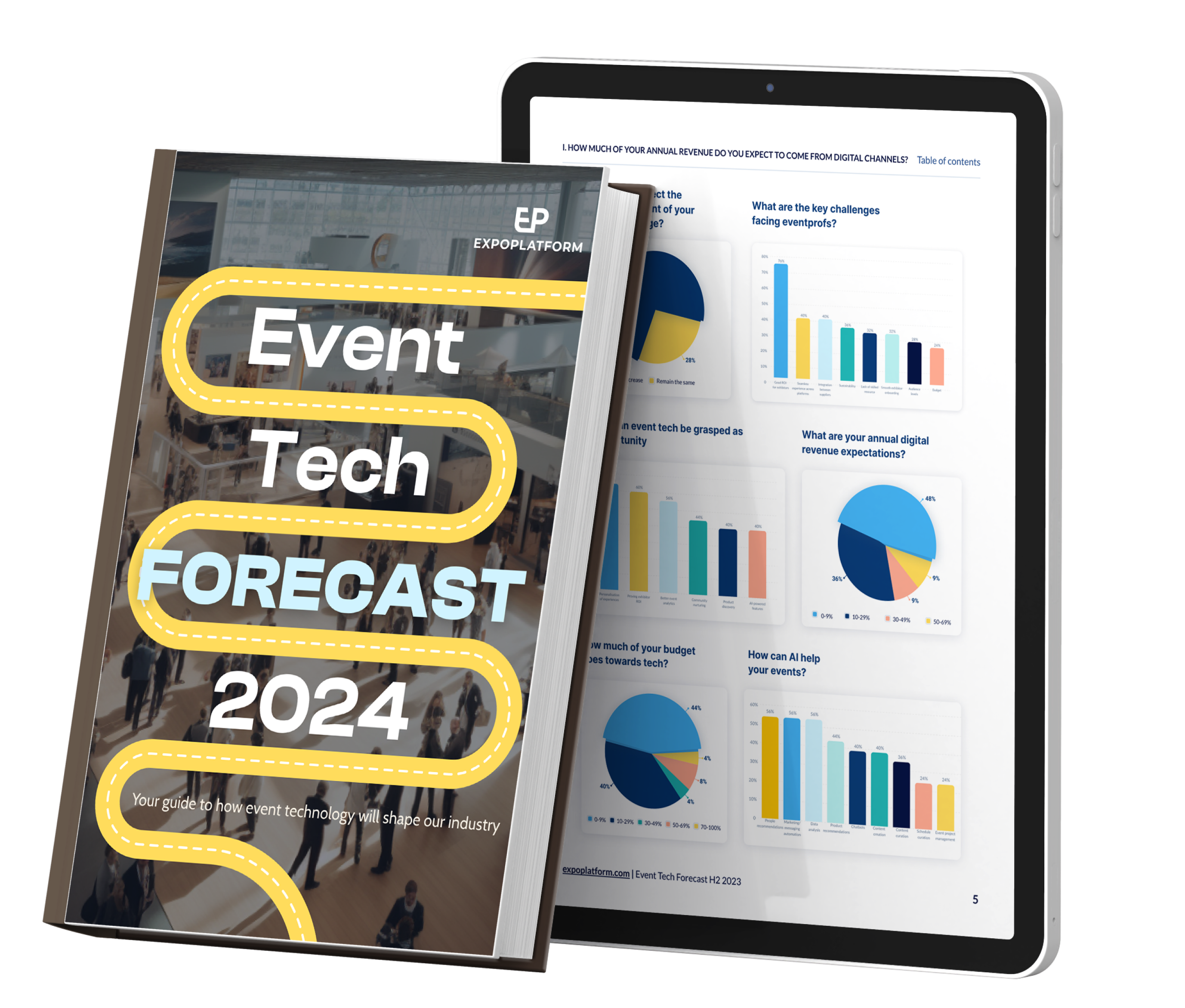
Tradeshow interactive floor plans: a complete walkthrough
Live shows are back and organisers are need to get their audience meeting face-to-face again. Getting attendees to the venue is an important first step, but moving them around the floor is crucial to driving value.
The rise of Smart Events makes an interactive tradeshow floor plan perfect for enhancing the visitor experience. In this guide we walk you through an interactive floor plan and how it is used to make the tradeshow experience more worthwhile.
Here’s what all you will read:
- Tradeshow floor plans – then and now
- What are interactive floor plans for tradeshows?
- Benefits of using interactive floor plans for tradeshows
- Interactive floor plan software in action
- Tips to use interactive floor plans successfully in your next trade show
- Conclusion
Tradeshow floor plans – then and now
Old school tradeshow floors were just a large hall with visitors walking from one exhibit to another in a rather aimless manner. Randomly installed signs tried to provide directions but exploring the entire venue was still a chaotic exercise. This is no longer the case.
Digital technologies now available mean you need to be more aware than ever of your customer’s needs as they try to navigate their way through. If they struggle to find what they’re looking for, that’s not good.
This is where interactive floor plans come in. They allow you to provide a more seamless experience for your customers – one that’s not only easy, but fun as well.
Visitors can get quickly acquainted with the layout of the show space, as well as find their way around. These floor plans are likely to make exhibitors feel less rushed through the space, stay on schedule and make less last-minute adjustments.
What are interactive floor plans for tradeshows?
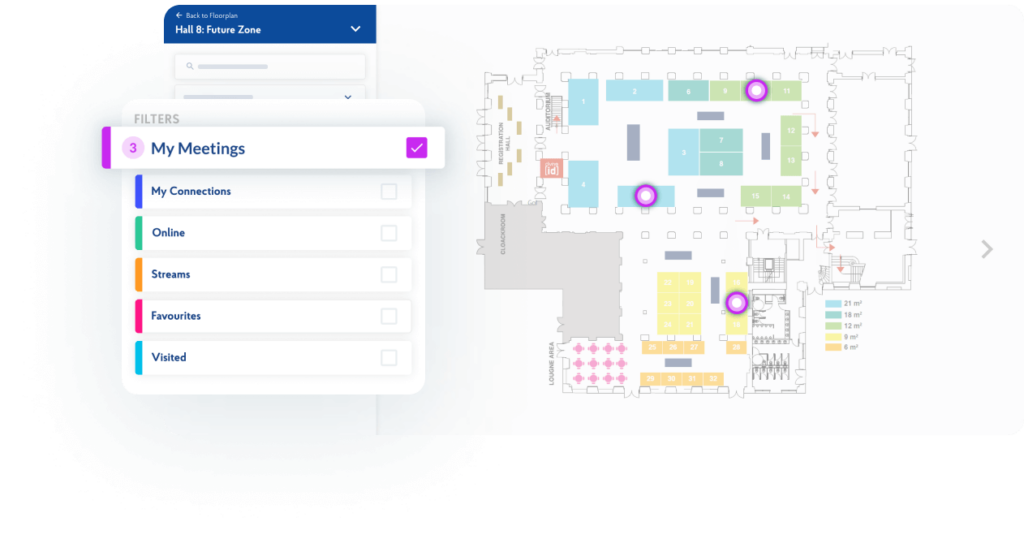
Interactive floor plans for tradeshows are digital maps used by organisers to visualise the layout of an event’s space. You can quickly see how many people will be using each area of your venue at any given time.
This allows you to make better decisions about where to place tables chairs, exhibits as well as plan out staffing needs. They’re also a great way to help attendees navigate the tradeshow floor and find the booths they are interested in.
These floor plans are integrated into the mobile event app and fit right into your workflows e.g. booth selection for exhibit sales, breakout areas for conversations, refreshments and more.
Benefits of using interactive floor plans for tradeshows

The main advantage of using an interactive floor plan is the smooth experience for visitors at tradeshows. There are a host of other benefits, which include:
Better branding through customisation
Exhibitors can customise their stands on the interactive map by sharing brief info, custom branding and links to individual profiles.
Drive engagement on exhibitor profiles
Use features like meet, message and favourite to increase interactions between visitors and mini-profiles on the floor plan.
Personalised view through filters
Visitors can see a custom view by selecting multiple filters and sorting out the venue space.
Increase booth traffic
Interactive floor plans help drive traffic to exhibitor booths by providing a visual representation of their products and services. This boosts engagement as visitors can quickly and easily find what they are looking for.
Save time
Creating a detailed view of the entire event space means you don’t need to spend hours drawing up floor plans yourself. It means you can focus on designing the booth displays and other marketing materials – as well as getting ready for the event itself.
Get a bird’s eye view of the event space
An interactive floor plan means you can quickly zoom in on specific areas of interest, giving you a closer look at your venue without having to walk through every nook and cranny.
Easy to share
Simply upload it to your website, email it to clients or post it on social media sites like Facebook and Twitter. Your audience can then access the same view of your event space as you do.
Interactive floor plan software in action
An interactive floor plan is a crucial part of mobile apps to enhance the Smart Event experience. ExpoPlatform’s partnership with UK-based location software provider Crowd Connected shows how this tech can be harnessed to benefit organisers, exhibitors and visitors.
Crowd Connected’s indoor positioning solutions include features like indoor mapping and blue-dot wayfinding that are laid on a virtual floor plan. This helps attendees easily navigate from one location to another at the venue.
They can check out and access different conference halls, meeting rooms, exhibitor booths and breakout areas. The routing feature in the software shows visitors where they have entered from and where they are heading to.
Exhibitors can use the data-driven services from Crowd Connected to offer location-based personalisation and recommendations. One can also view footfall-based exhibitor performance for every stand at the venue and analyse real-time data visualisations through heatmaps.

This is an experience similar to Google Maps but with richer data capture in the navigation to understand the tradeshow performance.
Mark Maydon, commercial director at Crowd Connected, told ExpoPlatform: “Your phone tells you where you are and gets you to where you need to go. -But that doesn’t work indoors because Apple and Google haven’t mapped the temporary show floor environment, while GPS – which is what the phone is relying on for the blue dot – doesn’t work indoors.
“We’re basically replicating that familiar experience for app users at a show. That makes the app really valuable to the visitor, so they’ll use it more.”
“And that’s really valuable to the organiser because the app is gathering more data as app users move around the show floor – even when the app isn’t actively being used. It’s a win-win for everybody.”
Tips to use interactive floor plans successfully in your next trade show

Below are some suggestions on how you can get the most out of these floor plans for your exhibitions and tradeshows:
1) Make sure they’re accurate. Check them against your actual physical space as well as your current seating chart before making final decisions.
2) Keep them simple. If you have too much going on, it may be difficult for attendees to understand what they’re looking at. Try keeping it clean and clear.
3) Include more than just seats. Interactive floor plans should include information about the size of each table, as well as the number of people who will be sitting there. They should also include details such as whether food will be served during the event – and where it will be. The floor plans should also be Covid-proof and adhere to the local guidelines to maintain health and safety.
4) Don’t forget about staff. Make sure your interactive floor plans include enough detail to allow your staff to easily find their way around the venue.
5) Use them to make informed decisions. Interactive floor plans can provide valuable insight into how many people will be attending your event. But they can also help you decide where to put your exhibitor booths and where to position your registration desk.
Conclusion
Interactive floor plans serve many purposes – people can find their way easily around the venue, organisers can display booths and exhibitor profiles in a visually pleasing way and they can be used with augmented reality to help visitors explore more offerings at the event. If you’re looking for an extra layer of interactivity and efficiency at your next tradeshow, check out how an interactive floor plan can help.
We hope you enjoyed reading this article and found it useful. At ExpoPlatform, we want to help you build better events and communities. Please get in touch and ask for a demo here. Thank you.
There's more you might like
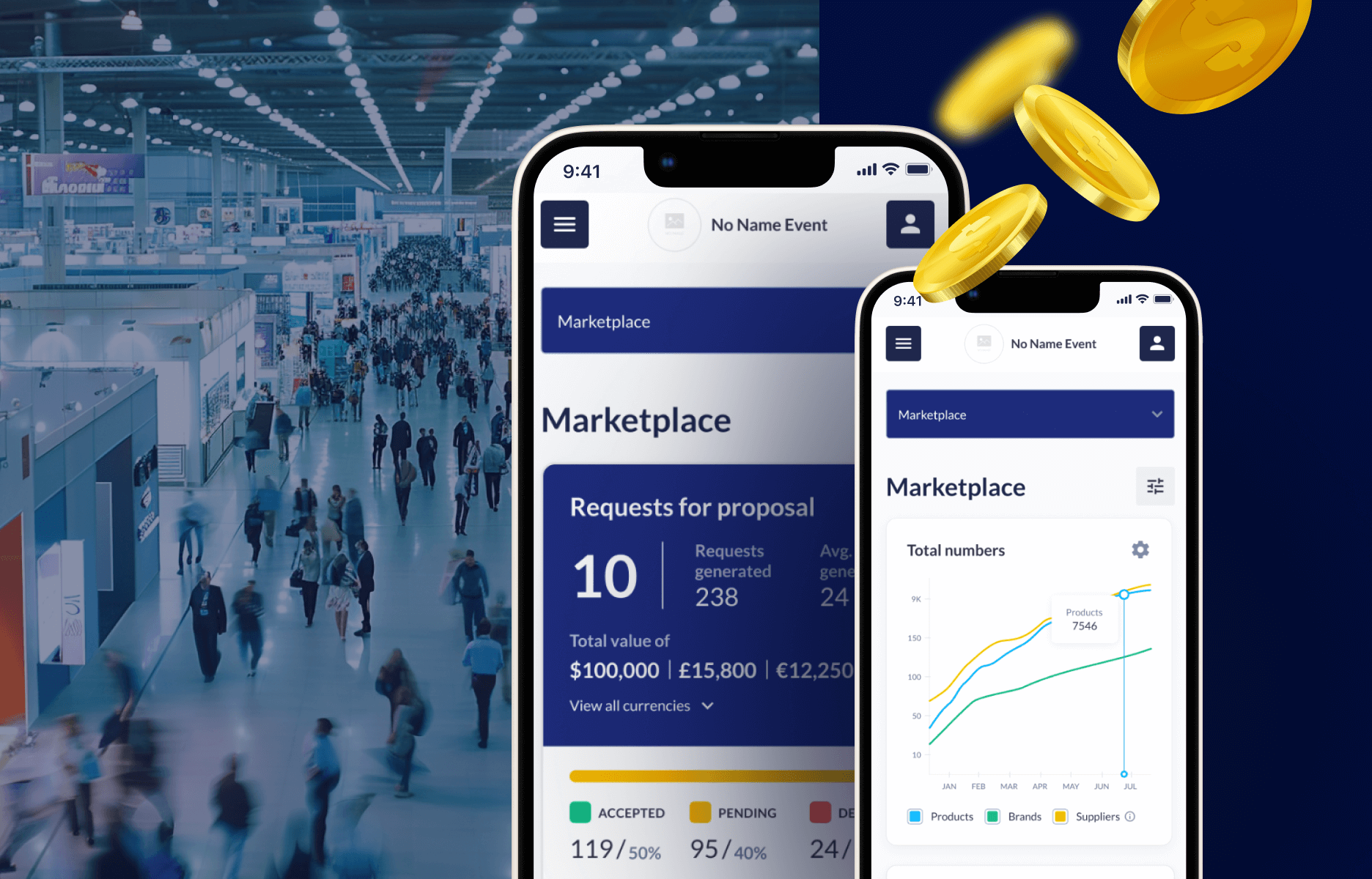
Budget smarter: essential tradeshow cost guide
Tradeshows are becoming more expensive to organise. Geopolitical tensions are affecting supply chains and economic uncertainties are pushing upward pressure on inflation. In addition, rising venue rental costs and wage pressures are weighing down on already constrained budgets by companies demanding measurable outcomes and demonstrable ROI. Organisers have their task cut out – manage the ...
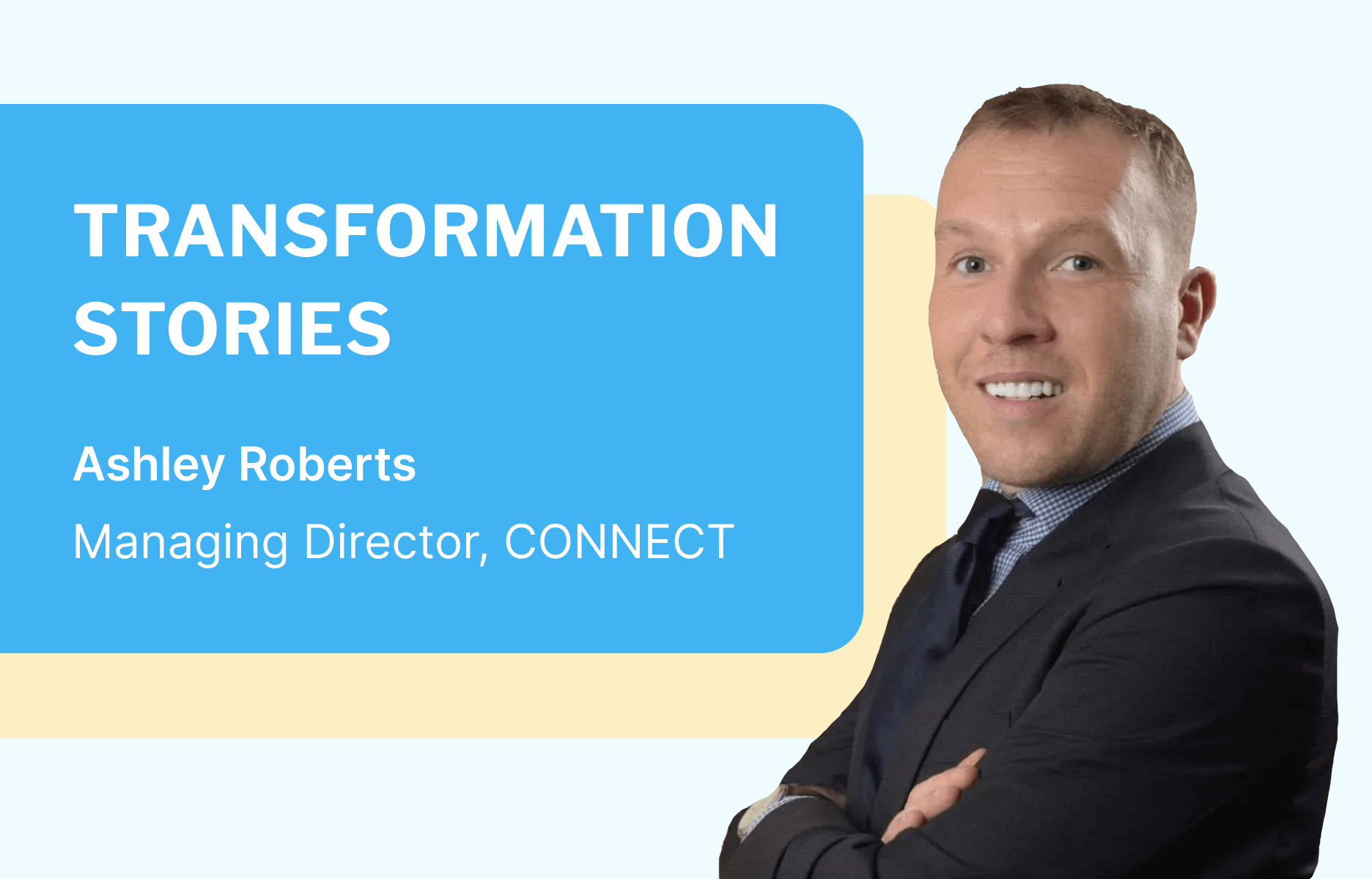
Event market consolidation ‘creates room’ for innovators
Market consolidation may create “unhealthy competition” but leaves opportunities for smaller planners, according to an industry leader. Ashley Roberts, managing director for CONNECT, highlighted how a growth in acquisitions over recent years can stifle innovation because many are unable to compete with the “large tool chest” of major groups. But he believes it opens doors ...
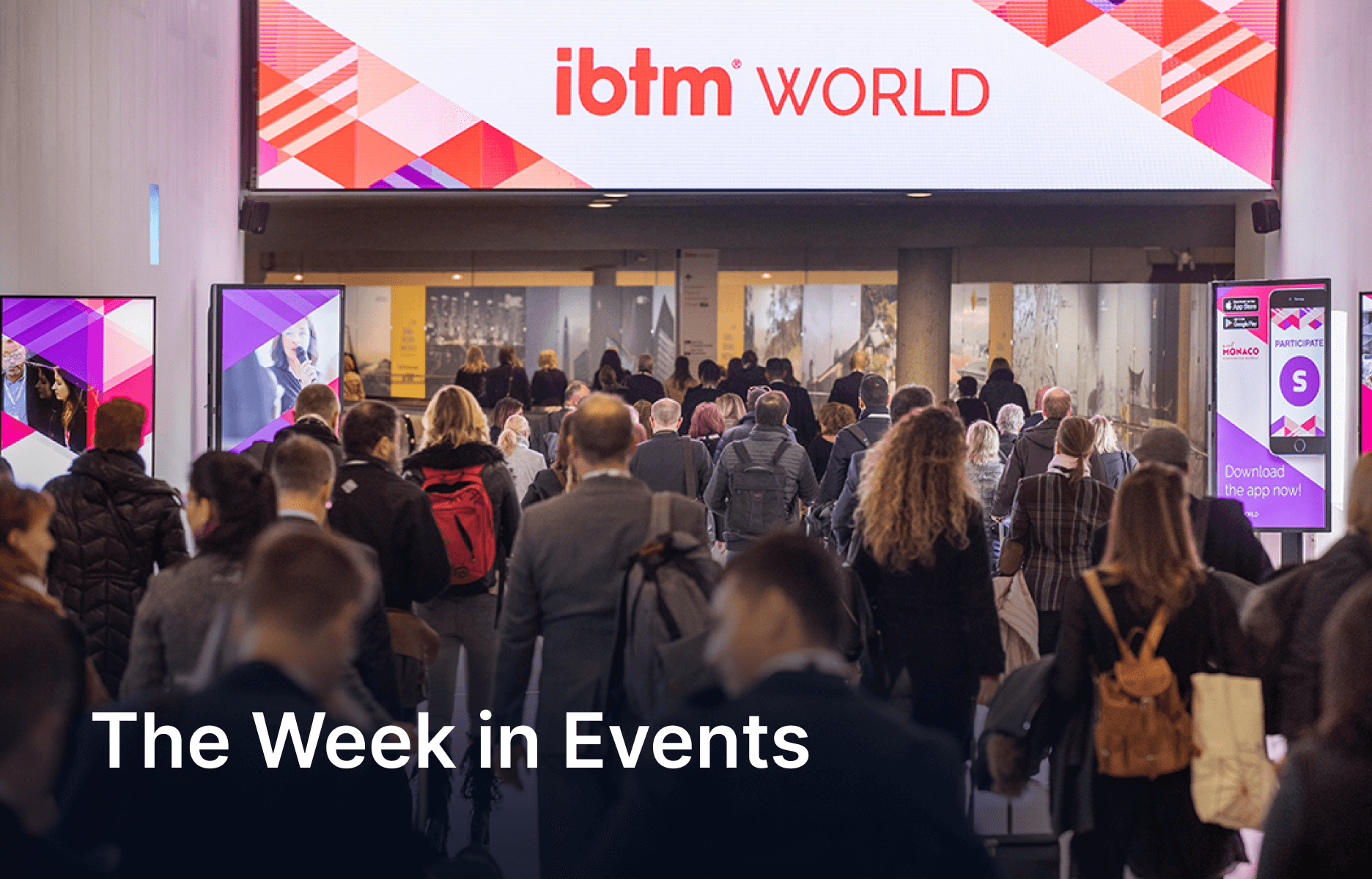
AI to hyper-personalise 2024 event engagement – IBTM report
The hyper-personalisation of event engagement has been highlighted as a key focus for 2024 in a new report. Predictions from the IBTM study suggest technology and attendees will start to interact to create a more personalised user experience. You can read more of this main story below. Other pieces in this week’s event roundup include: ...

